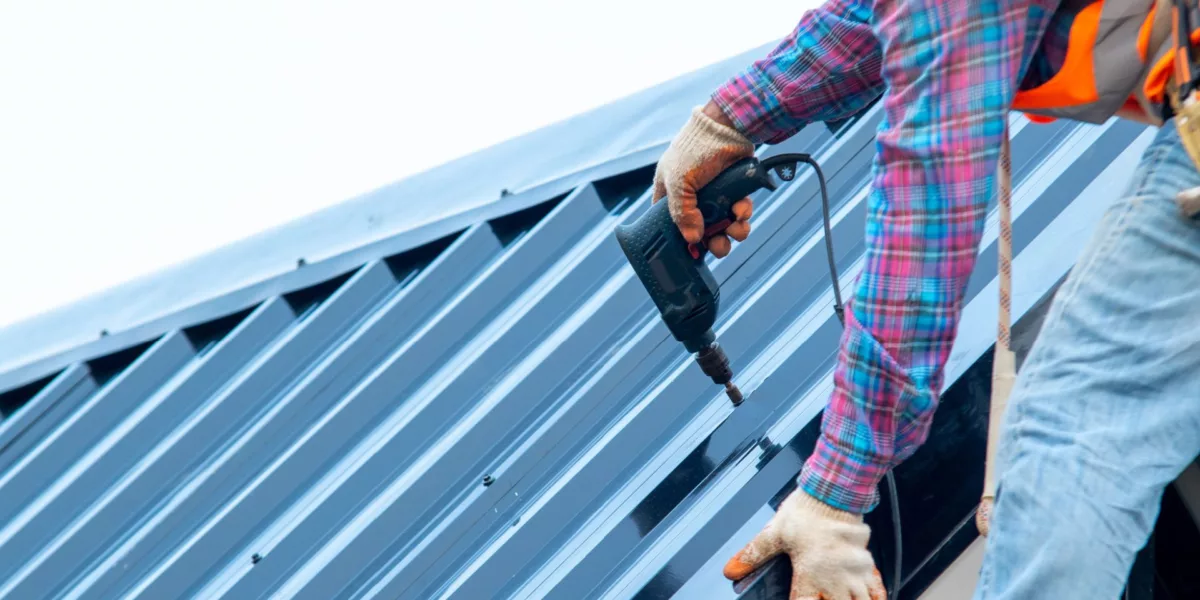Roofing: A Comprehensive Guide to Roofing Essentials
Roofing is a vital aspect of any kind of structure, giving security against the elements and making certain the structural honesty of a home. In "Roofing: A Comprehensive Guide to Roof Covering Fundamentals," we look into the fundamental expertise needed to recognize and implement effective roof tasks. This overview covers a variety of subjects, consisting of a review of different roof covering materials, the advantages of each product, and the essential devices required for roofing projects. In addition, we explore the step-by-step process associated with roof, giving beneficial understandings into appropriate setup techniques. We provide functional pointers for preserving and repairing your roofing, extending its life-span and preventing costly damage. Whether you are a professional service provider or a home owner aiming to enhance your knowledge, this guide is a valuable resource for grasping the fundamentals of roof covering.
Different Types of Roofing Products
When it concerns roofing, there are different kinds of materials available for various applications and climates. Choosing the best roofing product is necessary, as it not only affects the aesthetic appeals of a building yet also plays a vital function in shielding it from outside aspects. One of the most prominent roof covering products is asphalt tiles. These shingles are affordable, easy to set up, and be available in a vast array of colors and styles. They appropriate for most environments and give superb resilience and weather condition resistance. An additional preferred option is metal roof covering, which provides extraordinary long life and durability. Metal roofing systems are immune to fire, insects, and rot, making them a perfect choice for areas with severe climate condition. Tile roof covering is another option that is recognized for its long life and visual allure. Floor tiles are readily available in numerous products such as clay, slate, and concrete, and can endure severe climates. There are likewise options like wood shakes and artificial materials like rubber and plastic. Each roofing material has its own benefits and disadvantages, so it is important to consider aspects such as sturdiness, maintenance, and expense requirements prior to deciding.
Benefits of Each Roof Product
Each roof material offers special benefits that make it ideal for different applications and climates. When selecting the ideal roof covering product for a particular job., comprehending these benefits can aid property owners and professionals make educated decisions.
Asphalt tiles, for instance, are one of the most popular roof products due to their price, resilience, and simplicity of setup. Steel roofs, on the various other hand, are understood for their long life and energy performance.
For those looking for a much more eco friendly choice, there are roof materials like clay ceramic tiles and slate. Clay tiles are fireproof, sturdy, and offer excellent insulation. Slate roof coverings are not only aesthetically pleasing yet also very sturdy, with a life expectancy of approximately 100 years (High Point roofing). They are immune to fire, mold, and parasites.
When it comes to level roof coverings, EPDM (ethylene propylene diene terpolymer) rubber is a popular selection due to its versatility, simple installment, and resistance to UV rays and weathering. It is also affordable and needs marginal upkeep.
Essential Tools for Roof Covering Projects
Roof tasks call for a series of vital devices to make certain effective and efficient setup or repair service. These devices are developed to provide security, accuracy, and simplicity of usage for employees on the roofing. One of one of the most vital devices is a roof nail gun, which permits protected and fast attachment of tiles or various other roof materials. A roofing nail weapon gets rid of the demand for manual hammering, saving time and decreasing pressure on the worker's hands and arms.
One more necessary device is a roofing blade, which is utilized for reducing tiles and various other products to the desired dimension and form. Get More Info A roof covering blade must have a sharp, sturdy blade that can easily slice via different roof products. In addition, a roof shovel or tear-off device is necessary for removing old or broken roofing materials. This device has a level, large blade that can efficiently tear off shingles, nails, and various other particles from the roof covering.
Various other vital devices include a roofing hammer, which is utilized for driving nails into the roofing system and eliminating them if essential, and a chalk line for noting guidelines and guaranteeing straight setup. A ladder or scaffolding is also crucial for accessing the roofing system safely and efficiently.

Steps Associated With the Roof Process
To begin the roof covering procedure, it is crucial to very first examine the condition of the existing roof and determine if any kind of replacements or repair work are needed. This action is vital as it sets the structure for the rest of the roofing job.

After preparing the roof covering, the next action is to mount or repair the roof covering products. This entails putting down the ideal underlayment, such as roof really felt, and after that applying the picked roof material, such as tiles or tiles, according to the manufacturer's guidelines. roofing High Point. It is very important to follow the proper installment methods to make certain a watertight and long lasting roof covering
Lastly, the last action in the roof process is to perform a final examination to ensure that the roof covering has been appropriately set up or repaired. This involves monitoring for any kind of broken or loose materials, along with guaranteeing that all blinking and seals are safe. It is critical to address any kind of issues right away to protect against further damages or leakages.
Tips for Preserving and Repairing Your Roof
When preserving and repairing your roof covering, it is critical to consistently inspect for any kind of indications of damages or wear. By conducting regular inspections, you can catch possible issues early and prevent them from rising right into even more considerable troubles. Begin by examining your roofing for any loose or absent roof shingles, as these can leave your roof vulnerable to leakages and water damage. Furthermore, seek any indications of drooping or disproportion, as this might show architectural damage that requires instant attention.

Moreover, examine your roof covering for any type of indicators of leaks or water discolorations on the ceiling or walls inside your home. These can be signs of a roofing system leak and need to be resolved without delay to stop further damage. Pay very close attention to locations around smokeshafts, skylights, and vents, as these prevail areas for leaks to occur.
Frequently cleaning your roofing system is an additional crucial facet of upkeep. Get rid of any type of particles, such as branches or fallen leaves, as they can trap moisture and lead to roof covering degeneration. Additionally, keep gutters and downspouts clear to make sure appropriate water drainage and prevent water from pooling on your roof.
In regards to repair work, it is crucial to address any type of problems immediately to prevent additional damages. Small fixings, such as replacing missing tiles or securing small leakages, can commonly be done by property owners. For much more substantial repair services or if you are not sure of the extent of the damage, it is suggested to seek advice from with a professional roof covering professional.
Verdict
In conclusion, recognizing the fundamentals of roof covering is necessary for home owners and experts alike. In addition, the steps entailed in the roof covering procedure and tips for their explanation maintaining and fixing roofs have actually been reviewed.
In "Roofing: A Comprehensive Overview to Roof Covering Fundamentals," we delve into the fundamental understanding needed to comprehend and execute effective roofing jobs. One of the most vital tools is a roof nail gun, which enables for protected and quick accessory of roof shingles or various other roofing materials. A roofing knife ought to have a sharp, sturdy blade that can conveniently cut through numerous roof materials. In addition, a roofing shovel or tear-off tool is necessary for getting rid of broken or old roof products.After preparing the roofing system, the next step is to mount or fix the roofing materials.